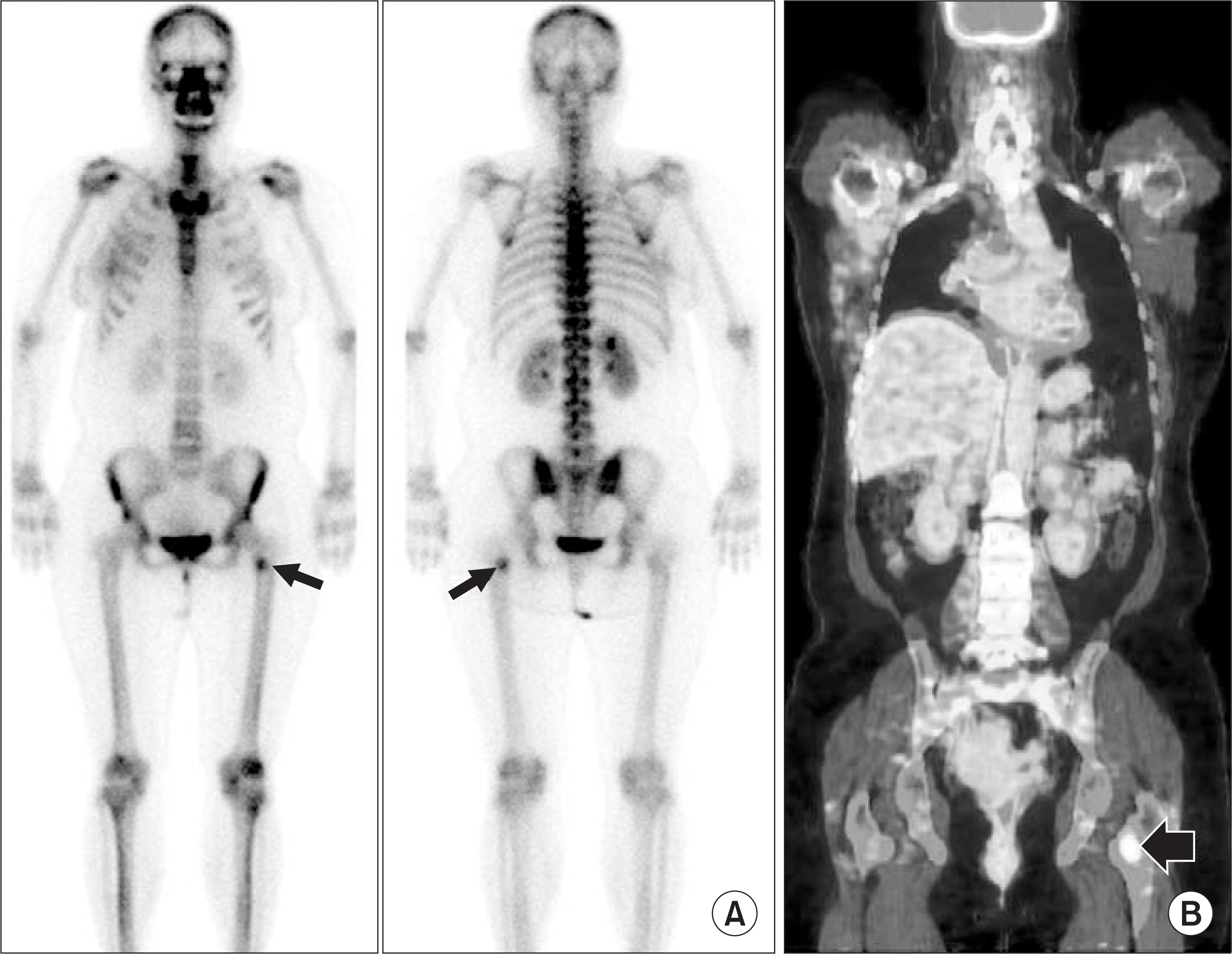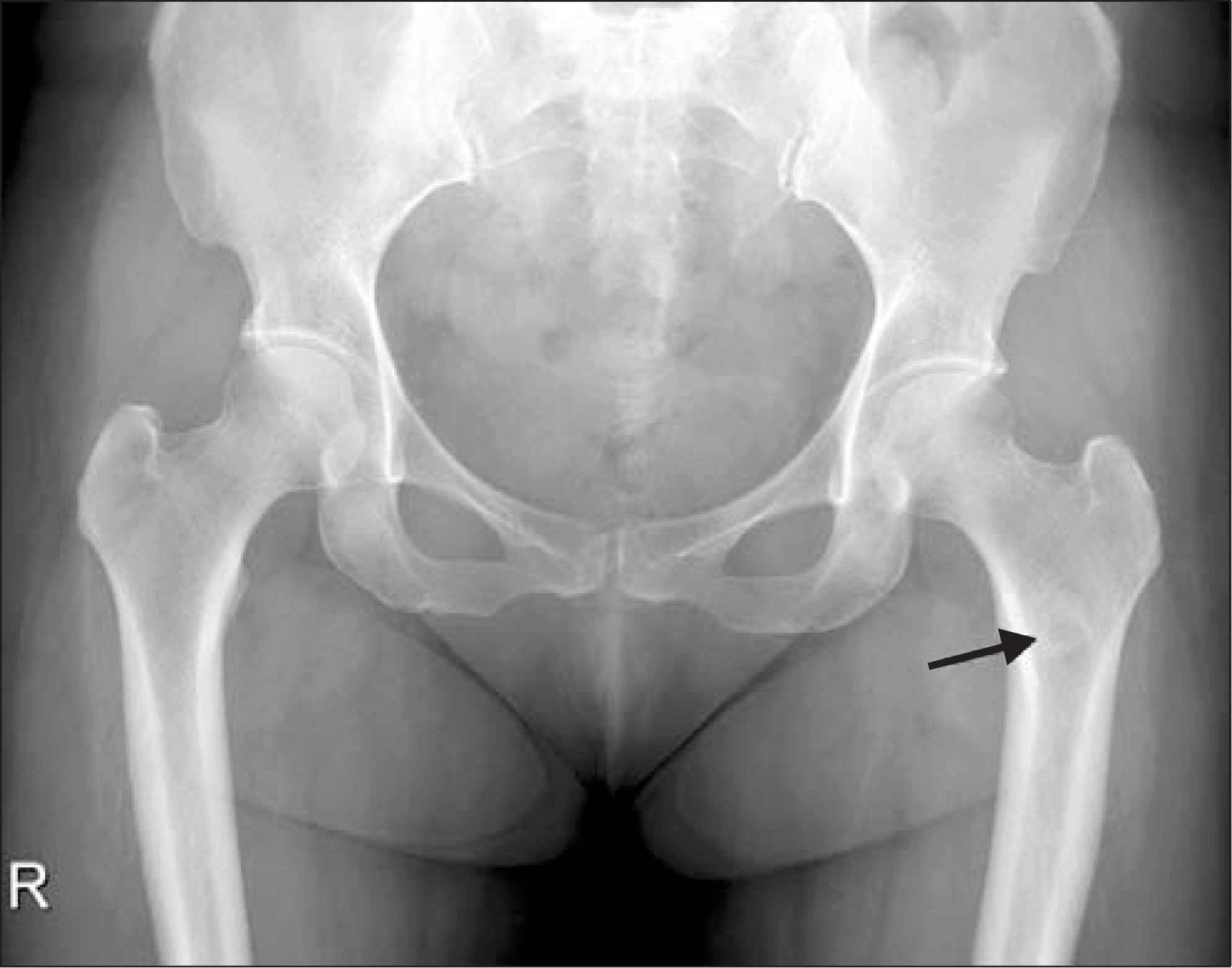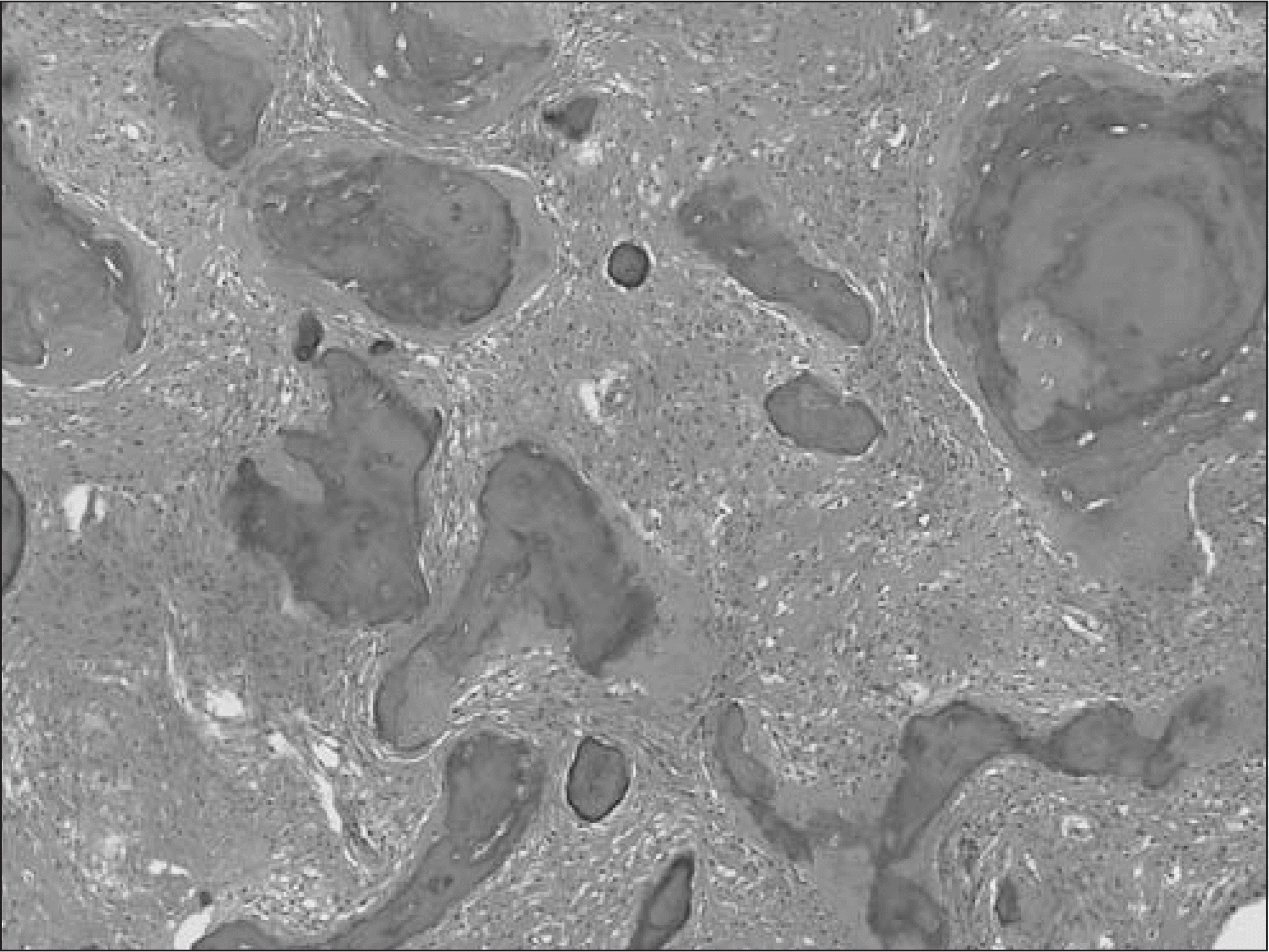Abstract
Fibrous dysplasia is a common benign disorder of bone in which normal bone marrow is replaced with fibroosseous tissue. As PET/CT is increasingly used for the staging of different malignant disease, incidentally found fibrous dysplasia with increased FDG uptake may mimic metastasis. We report on a 46-year-old woman with fibrous dysplasia who underwent PET/CT because of suspected recurrence of breast cancer and was misdiagnosed as a bony metastasis with a focal FDG uptake on left proximal femur. This lesion was interpreted as fibrous dysplasia based on MRI in addition to the plain radiographs. We conclude that MRI in addition to radiography may help to differentiate fibrous dysplasia mimicking metastasis on PET/CT in the patients with malignancy.
REFERENCES
1. Kao CH, Sun SS, Shen YY, Chen YK. Misdiagnosis of multiple bone metastases due to increased FDG uptake in polyostotic fibrous dysplasia. Clin Nucl Med. 2007; 32:409–10.

2. Stegger L, Juergens KU, Kliesch S, Wormanns D, Weckesser M. Unexpected finding of elevated glucose uptake in fibrous dysplasia mimicking malignancy: contradicting metabolism and morphology in combined PET/CT. Eur Radiol. 2007; 17:1784–6.

3. Strobel K, Bode B, Lardinois D, Exner U. PET-positive fibrous dysplasia–a potentially misleading incidental finding in a patient with intimal sarcoma of the pulmonary artery. Skeletal Radiol. 2007; 36(Suppl 1):24–8.
4. Shigesawa T, Sugawara Y, Shinohara I, Fujii T, Mochizuki T, Morishige I. Bone metastasis detected by FDG PET in a patient with breast cancer and fibrous dysplasia. Clin Nucl Med. 2005; 30:571–3.

5. Tsuyuguchi N, Ohata K, Morino M, et al. Magnetic resonance imaging and [11C]methyl-L-methionine positron emission tomography of fibrous dysplasia–two case reports. Neurol Med Chir (Tokyo). 2002; 42:341–5.
6. Cook GJ, Houston S, Rubens R, Maisey MN, Fogelman I. Detection of bone metastases in breast cancer by 18F-FDG PET: differing metabolic activity in osteoblastic and osteolytic lesions. J Clin Oncol. 1998; 16:3375–9.
7. Jee WH, Choi KH, Choe BY, Park JM, Shinn KS. Fibrous dysplasia: MR imaging characteristics with radiopathologic correlation. Am J Roentgenol. 1996; 167:1523–7.

8. Maeda M, Kimura H, Tsuchida C, Ishii Y, Kubota T. MR imaging of monostotic fibrous dysplasia of the clivus. A case report. Acta Radiol. 1993; 34:527–8.
Figure 1.
A 46-year-old woman with breast cancer. Bone scintigraphy (A) shows a focal hot uptake (arrow) in left proximal femur. PET/CT (B) shows a focal FDG uptake (arrow) in left proximal femur and was mis-interpreted as a single metastasis from breast cancer.

Figure 2.
Radiograph in a 46-year-old woman shows an intramedullary lesion with a diffuse sclerotic lesion (arrow) on left proximal femur.

Figure 3.
A 46-year-old woman who underwent MRI for intermittent left hip pain after radiation for one month. Left proximal femoral lesion was interpreted as a fibrous dysplasia based on MR findings. T1-weighted (A) and T2-weighted (B) coronal images show a well-defined hypointense lesion (arrows in A and B) in left proximal femur. Fat-suppressed T2-weighted coronal image (C) shows moderate perilesional hyperintense signal (arrowheads) on the left proximal femur suggesting post-radiation edema. Contrast-enhanced T1-weighted coronal image (D) shows mild contrast enhancement in the mass (arrow). Axial fat-suppressed contrast-enhanced T1-weighted image (E) also shows mild contrast enhancement in the mass. Adjacent muscles in the medial compartment of the thigh shows relatively well-demarcated contrast enhancement, suggesting post-radiation edema.





 PDF
PDF ePub
ePub Citation
Citation Print
Print



 XML Download
XML Download